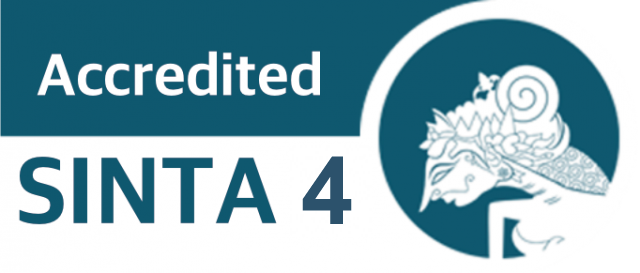Development of the uno chemical card game as a learning medium on the chemical bonding material for high school student
DOI:
10.29303/jpm.v18i2.4783Published:
2023-03-30Issue:
Vol. 18 No. 2 (2023): March 2023Keywords:
Chemistry Uno Cards, Learning Media, Chemical BondsArticles
Downloads
How to Cite
Downloads
Metrics
Abstract
This study aims to develop chemical uno cards as learning media in class X senior high school in chemical bonding materials that are valid and practical. This type of research is development research using the Plomp model. This research has three stages, namely (1) preliminary research, (2) prototyping stage, and (3) assessment phase. The subjects of this research consist of 5 chemistry lecturers at the Faculty of Mathematics and Science, Padang State University, two chemistry teachers, and 12 students at SMA N 13 Padang for the 2021/2022 academic year. The research instruments used were self-evaluation sheets, one-to-one evaluation interview sheets, content validity questionnaires, construct media, and practicality questionnaires. Data analysis for validity uses Aiken's V formula, and practicality uses the percentage formula. The research results obtained a V value for material validation of 0.92 and media validation of 0.92, which are included in the valid category. The media practicality was obtained from the teacher's response of 96.8% and 94.4% of the students included in the very practical category.
References
Tirtarahardja , & sulo, l. (2015). Pengantar Pendidikan. jakarta: rineka cipta.
Kemendikbud. (2018). Panduan Penilaian oleh Pendidik dan Satuan Pendidik untuk Sekolah Menengah Atas. Jakarta: Direktorat Jenderal Pendidikan Dasar dan Menengah.
Mulyasa, E., & Profesional, M. K. S. (2004). Cet. Ke-4 Bandung: PT. Remaja Rosda Karya.
Sudiman. (2014). Media Pendidikan : Pengertian, Pengembangan dan Pemanfaatan, . Jakarta: PT. Raja Grafindo Persada.
Estiani, W., Widiyatmoko, A., & Sarwi, S. (2015). Pengembangan Media Permainan Kartu Uno Untuk Meningkatkan Pemahaman Konsep dan Karakter Siswa Kelas VIII Tema Optik. Unnes Science Education Journal, 4(1).
Suharyati, H., & Helena, G. (2018). Developing Edugames Learning Media Based on Local Culture. International Journal of Multi Discipline Science (IJ-MDS), 1(2), 169-176.
Henny, S. (2018). Devoloping Edugames Learning Media Based on Local Culture. International Journal of Multi Discipline Science. Vol. 1. No. 2.
Reigeluth, C, M., & Beatty, B, J. (2016). Instructional-design Theories and Models: The learner-centered paradigm of education. New York: Routledge
Agustin, L. (2018). Pengembangan Media Pembelajaran Kartu UNO Pada Materi Bank Untuk Siswa Kelas X IIS MAN 2 Lamongan. Jurnal Pendidikan Ekonomi (JUPE), 6(3).
Ulfah, T. A., Wahyuni, E. A., & Nurtamam, M. E. (2021). Pengembangan media pembelajaran permainan kartu uno pada pembelajaran matematika materi satuan panjang.
Halimatusya'diah, S. (2020). Pembuatan media pembelajaran Uno Spin kimia pada materi sistem periodik unsur (Doctoral dissertation, UIN Sunan Gunung Djati Bandung) 11.
Sari, Y., Solehah, G. H., & Mashuri, M. T. (2018). Pengaruh Penggunaan Media Permainan Kartu Uno Pada Materi Senyawa Hidrokarbon Terhadap Hasil Belajar Siswa. Vidya Karya, 33(1), 35-41.
Hidayati, N. (2014). Pengembangan Permainan Kartu Uno Sebagai Alat Evaluasi Pembelajaran Akuntansi Pokok Bahasan Hutang Jangka
Rahmawati, R., Muttaqin, M., & Listiawati, M. (2019). Peran Permainan Kartu Uno Dalam Meningkatkan Keterampilan Berpikir Kritis Siswa. Jurnal Program Studi Pendidikan Biologi(Agustus), 9(2).
Aulya, R., Zulyusri, Z., & Rahmawati, R. (2021). Media Pembelajaran Berbentuk Kartu dengan Metode Permainan UNO pada Materi Protista. Jurnal Penelitian Dan Pengembangan Pendidikan, 5(3), 421-428.
Lestari, N. D., Suryana, Y., & Elan, E. (2018). Pengaruh media kartu permainan uno terhadap hasil belajar siswa pada materi membandingkan pecahan sederhana. PEDADIDAKTIKA: Jurnal Ilmiah Pendidikan Guru Sekolah Dasar, 5(2), 193-203.
Depdiknas. (2003). Undang-Undang Repubik Indonesia Nomor 20 tahun 2003 Tentang Sistem Pendidikan Nasional.1
Pratiwi, A. K., Makhrus, M., & Zuhdi, M. (2021). The effectiveness of learning media based on the guided inquiry model to improve students science literature skills and scientific attitudes. Jurnal Pijar Mipa, 16(5), 636-639.
Makhrus, M., Rokhmat, J., Kosim, K., & Harjono, A. (2022). Development of learning media and online test based smartphone android in physics learning on work and energy topic. Jurnal Pijar Mipa, 17(3), 420-423.
Sudjana, Nana, & Ahmad, R. (2011). Media Pengajaran. bandung: sinar baru algensindo.
Degeng, I., & Sudana, N. (1993). Media Pendidikan. Malang: FIP IKIP Malang.
Author Biographies
Lilis Dahlianis, Chemistry Education Study Program, Faculty of Mathematics and Natural Sciences, Universitas Negeri Padang
Iswendi Iswendi, Chemistry Education Study Program, Faculty of Mathematics and Natural Sciences, Universitas Negeri Padang
License
Copyright (c) 2023 Lilis Dahlianis, Iswendi Iswendi

This work is licensed under a Creative Commons Attribution 4.0 International License.
The following terms apply to authors who publish in this journal:
1. Authors retain copyright and grant the journal first publication rights, with the work simultaneously licensed under a Creative Commons Attribution License 4.0 International License (CC-BY License) that allows others to share the work with an acknowledgment of the work's authorship and first publication in this journal.
2. Authors may enter into separate, additional contractual arrangements for the non-exclusive distribution of the journal's published version of the work (e.g., posting it to an institutional repository or publishing it in a book), acknowledging its initial publication in this journal.
3. Before and during the submission process, authors are permitted and encouraged to post their work online (e.g., in institutional repositories or on their website), as this can lead to productive exchanges as well as earlier and greater citation of published work (See The Effect of Open Access).











